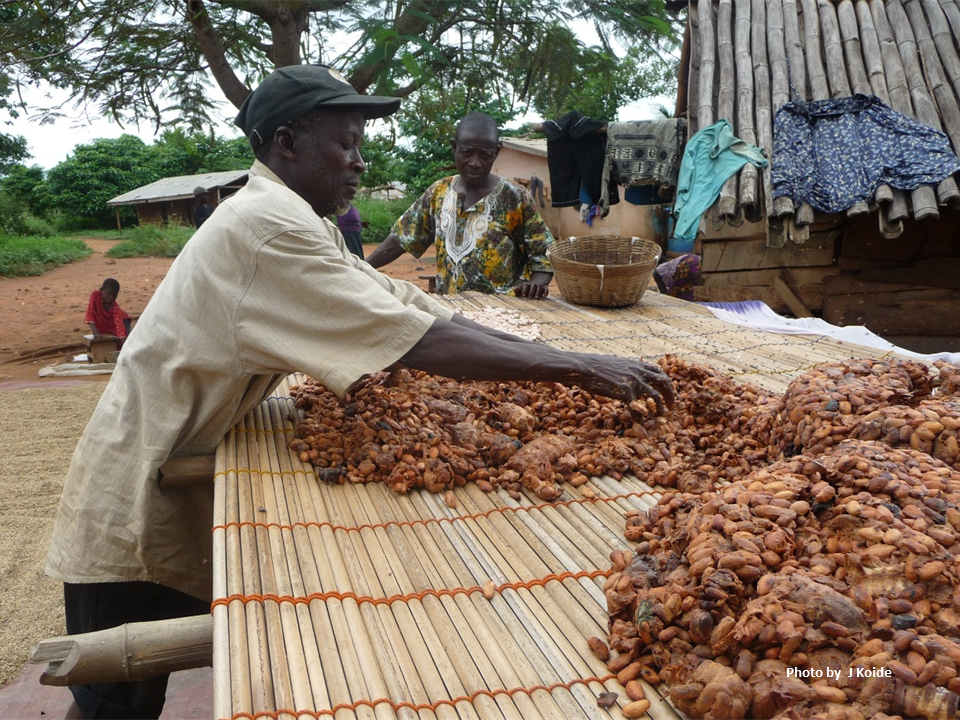Pick Up
1225. Farm Management Consulting for Farmers in Africa

1225. Farm Management Consulting for Farmers in Africa
Do you recognize the person in the photo above? This is Emmanuel, a cacao farmer in Ghana. You might be wondering, “Who is he?” But he could be a friend of a friend of a friend of a friend of a friend of a friend of yours.
It’s said that we’re all connected to anyone in the world through just a handful of acquaintances—usually around five—which is known as the “small-world phenomenon.” But in reality, we don’t even need personal connections to be linked to distant strangers. The cacao that Emmanuel and his fellow farmers grow is turned into chocolate that we in Japan enjoy, while, at the same time, the rice we consider a staple food has had its cultivation techniques shared with Ghanaian farmers through international cooperation. In fact, Emmanuel himself has been learning Japanese rice farming methods. When you think about it this way, we’re living in an even smaller world where we support and connect with each other, even without direct acquaintances.
When you imagine that “the world is built on someone’s work,” you start to notice the many things in everyday life to be grateful for, and that feeling brings a sense of peace. However, this kind of peace of mind might also be a form of naive complacency. For example, when you hear about Japan providing rice cultivation support abroad, you might see it as a wonderful initiative—one of Japan’s specialties—contributing to agricultural development in a distant land. I thought so too. But reality is not always so simple.
I once conducted a survey in villages where Japanese rice farming support had been implemented in Ghana. To my surprise, many farmers who had learned the techniques abandoned them shortly afterward. I was shocked to discover that Emmanuel was one of them. Why? From their perspective, Japanese rice farming requires leveling the land, constructing the bunds, controlling water and fertilizer at the right times, and carefully managing the crops—all of which demand significant cost and time. Although productivity increases compared to traditional methods, the high expenses and labor requirements reduce the resources available for growing other crops. For these farmers, cultivating more profitable crops like cacao, or staple foods such as maize and cassava, is essential. If rice production improves but disrupts their overall farm management, it may not be a desirable choice for them.
What happened in Ghana is not an isolated case. Across Africa, many agricultural support initiatives have successfully increased productivity and income for specific crops. However, research shows that these efforts sometimes negatively impact the production of other crops, failing to improve overall farm income and household livelihoods. Since most agricultural aid in Africa is intended to alleviate poverty, these outcomes are deeply frustrating.
So, what if we reverse our approach and start from the ultimate goal? If we truly aim to improve food security and reduce poverty, wouldn’t it be more effective to research the best possible way to manage farms that achieve these goals most efficiently? However, no such approach has been attempted in Africa before. That’s why we decided to develop a new “farm management diagnostic tool.” This tool collects various management-related data from farmers and analyzes which combination of crops and practices would allow them to both secure enough food for themselves and maximize their income. The results are then presented as practical recommendations for improving their farm operations.
We put this tool to the test in Mozambique, one of Africa’s most impoverished nations. The results were astonishing—many farmers saw a significant rise in income. What’s more, the additional earnings were put to good use: buying better seeds and livestock, renovating homes, affording medical care, and even starting new businesses. Seeing these real-life impacts gave me a surge of excitement—"This might really work!" Of course, there’s still much to be done to ensure the widespread use of this diagnostic tool. We need to keep refining our approach so that it truly addresses on-the-ground realities. But if we succeed, I believe we’ll be one step closer to a world that is small in connections, yet free from the blind spots of complacency.
Contributor: KOIDE Junji, Social Sciences Division
